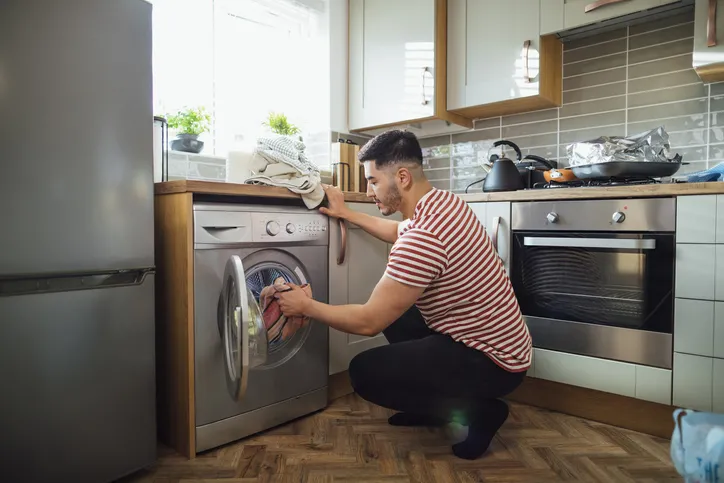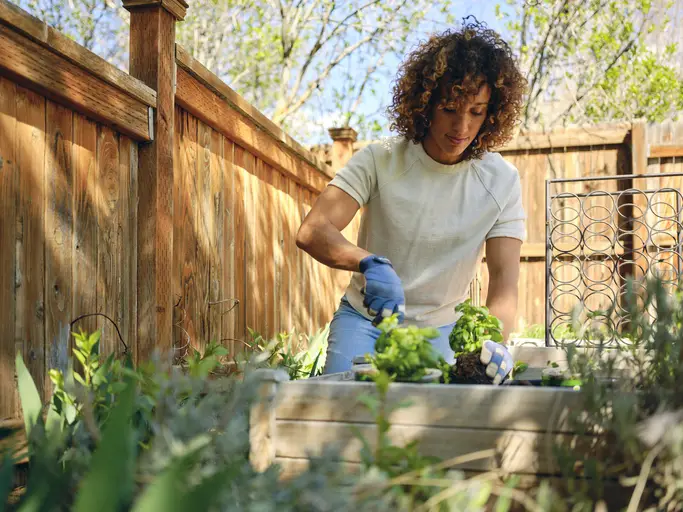Life can often feel like a never-ending cycle of spending, but making small lifestyle adjustments can significantly impact your savings. By rethinking habits and everyday choices, you can easily save over $10,000 annually without compromising your quality of life. Here are 15 practical and straightforward swaps to help you save money and live smarter.
1. Brew Your Own Coffee

Consider how much you spend on coffee each week. If you’re anything like most people, that daily coffee shop visit can quickly add up. By investing in a quality coffee maker and brewing your own coffee at home, you could save a significant amount. According to a study by Accounting Principals, the average American spends over $1,000 a year on coffee. Imagine redirecting that money towards savings or a fun vacation! The upfront cost of a coffee maker and supplies is quickly offset by the savings.
Moreover, brewing coffee at home allows for customization. You get to control the strength, flavor, and ingredients, ensuring every cup is just the way you like it. Plus, you can experiment with different types of beans and brewing methods, turning your morning routine into an exciting experience. Additionally, you’ll save time by avoiding morning lines at the café. It’s a small change with big payoffs, both financially and in terms of convenience.
2. Cook More At Home

Dining out is a convenient but expensive habit. On average, Americans spend $2,375 annually eating out, according to Money Under 30. By cooking at home more often, you can drastically cut this expense. Planning meals ahead and shopping with a list can further maximize savings. Not only is cooking at home cheaper, but it also tends to be healthier since you control the ingredients and portions.
Cooking can also become a fun social activity. Invite friends over for a potluck or family members for a cooking night. You’ll not only save money but also create lasting memories. Plus, with resources like cooking blogs and free tutorials online, improving your cooking skills is easier than ever. Transforming your cooking habits can significantly impact both your wallet and your well-being.
3. Use Public Transportation Or Carpool

Owning and maintaining a car can be costly, with factors like fuel, insurance, and maintenance adding up quickly. If you live in an area with reliable public transportation, consider using it more frequently. According to Railway Age, households can save more than $13,000 annually by using public transit instead of owning a car. Carpooling with colleagues or friends is another excellent alternative, sharing the costs and reducing wear and tear on your vehicle.
Public transportation or carpooling reduces your carbon footprint, contributing positively to the environment. It also provides opportunities to relax during your commute rather than dealing with driving stress. You can spend this time reading, catching up on emails, or simply enjoying some downtime. Additionally, fewer cars on the road mean less traffic congestion and lower pollution levels. Embracing this swap can be a win-win for your finances and the planet.
4. DIY For Home Maintenance And Repairs

Home maintenance and repairs can be shockingly expensive. While some tasks require professional expertise, many can be tackled with a bit of research and elbow grease. YouTube tutorials and DIY blogs are excellent resources for learning new skills. By handling minor repairs yourself, you can save on labor costs significantly. Plus, there’s a rewarding sense of accomplishment in fixing something on your own.
Take the time to learn basic plumbing, electrical, or carpentry skills, and you’ll find yourself less reliant on costly services. Start with small projects and gradually increase your confidence and capabilities. According to Sundial Marketplace, DIY home repairs not only save money but also help develop valuable skills while maintaining your home efficiently. A bit of DIY can boost both your bank account and your self-esteem.
5. Switch To A Streaming Service Instead Of Cable

Cable television is often a hefty monthly expense that many households can do without. Switching to streaming services can save you hundreds of dollars annually. Services like Netflix, Hulu, and Disney+ offer a wide array of content for a fraction of the cost of traditional cable. You can tailor your subscriptions to suit your preferences, ensuring you only pay for what you watch.
Streaming services also allow for greater flexibility and convenience. You can watch shows and movies on-demand, anytime and anywhere, without the constraints of network schedules. This freedom means you’re in control of your entertainment experience. Plus, with more original programming options available, streaming services often offer high-quality content that rivals traditional TV. Making this switch can bring significant savings and a better viewing experience.
6. Cut Out Unnecessary Subscriptions

It’s easy to lose track of monthly subscriptions, especially in a digital age where everything is just a click away. These small charges can accumulate and significantly impact your budget without much notice. Take a close look at your bank statements and identify subscriptions you rarely use. Whether it’s a magazine, an app, or a service you no longer need, canceling these can free up valuable funds.
Regularly reassessing your subscriptions ensures that you’re only paying for what truly adds value to your life. It also encourages mindful consumption, making you more aware of where your money is going. Consider consolidating services if possible, or explore family or group plans to reduce costs. This simple audit of your subscriptions can lead to substantial savings over time.
7. Set Up Automatic Savings Transfers

One of the easiest ways to save money is to make saving automatic. By setting up automatic transfers from checking to savings accounts, you ensure that you’re consistently saving money. Even small, regular transfers can add up to a significant amount over the year. Automating savings eliminates the temptation to spend the extra cash and helps you build a healthy financial cushion.
This approach to saving also encourages discipline and consistency in managing your finances. You can start with a modest amount and gradually increase it as your budget allows. Watching your savings grow can be motivating and reassuring, providing financial security for unexpected expenses or future goals. It’s a simple yet powerful tool for achieving long-term financial stability.
8. Shop Smart For Groceries

Groceries are a necessity, but smart shopping strategies can lead to considerable savings. Start by planning your meals for the week and creating a shopping list to avoid impulse purchases. Taking advantage of sales, coupons, and loyalty programs can further reduce your grocery bill. Buying in bulk and choosing store brands over name brands are also effective strategies.
Planning meals around seasonal produce and sales can optimize your spending. It’s also helpful to avoid shopping when hungry, as this can lead to unnecessary purchases. By becoming more strategic in your grocery shopping, you can enjoy nutritious meals and keep more money in your pocket. It’s about being mindful and intentional with your purchases to maximize savings.
9. Use Energy-Efficient Appliances

Upgrading to energy-efficient appliances can be a smart investment for substantial savings on utility bills. Appliances with the ENERGY STAR rating use less electricity, reducing your overall energy consumption. While they may have a higher upfront cost, the long-term savings on energy bills often justify the expense. Plus, they’re better for the environment, contributing to reduced greenhouse gas emissions.
Switching to energy-efficient models also increases the value of your home over time. It’s an investment in the future, reducing both expenses and environmental impact. Additionally, you might find utility companies offering rebates or incentives for making such upgrades. Embracing energy efficiency is a step towards sustainable living that benefits both your wallet and the planet.
10. Opt For An Affordable Staycation

Vacations are a great way to unwind, but they can be financially draining. Opting for a staycation, where you explore local attractions, can provide relaxation without the hefty price tag. By avoiding airfare and expensive accommodations, you save significantly. Plan activities you’ve always wanted to try in your area, such as visiting parks, museums, or nature trails.
A staycation allows you to enjoy your time off without the stress of travel logistics. You can sleep in your own bed and eliminate travel-related hassles. It’s also an opportunity to support local businesses and discover hidden gems in your community. Enjoying the comforts of home while experiencing new local adventures can redefine your vacation experience without breaking the bank.
11. Reduce, Reuse, And Recycle

Adopting a more sustainable lifestyle can lead to considerable savings. Reducing consumption, reusing items, and recycling can minimize waste and cut costs. Start by buying second-hand or repurposing items you already own. This eco-friendly approach not only saves money but also reduces your carbon footprint.
Engaging in DIY projects is another excellent way to reuse materials creatively. Consider repurposing old clothing or furniture, which can also become a fun and fulfilling hobby. Additionally, recycling efforts can sometimes earn you money through community recycling programs. By prioritizing sustainability, you contribute positively to the environment while boosting your savings.
12. Ditch Gym Memberships For Free Workouts

Exercising doesn’t have to come with a high price tag. Instead of a costly gym membership, explore the plethora of free workout options available. Many parks offer free exercise equipment and trails for running or cycling. There’s also a wealth of online resources, from workout videos to apps, that provide guided exercises without cost.
You can also join community fitness groups or attend free local classes. These alternatives not only save money but also can make exercising more enjoyable and accessible. By exercising in natural settings or at home, you can stay fit without financial strain. Embracing free workout options ensures that maintaining health doesn’t compromise your budget.
13. Avoid Impulse Buys

Impulse buying often leads to unnecessary expenses and buyer’s remorse. Practicing mindfulness in purchasing decisions can prevent these spontaneous splurges. Implement the 30-day rule: if you want to make a non-essential purchase, wait 30 days to see if the impulse persists. Often, the desire fades, saving you from unnecessary expenditures.
This practice encourages more intentional and thoughtful spending. It’s about prioritizing needs over wants and assessing the true value of items before purchasing. By curbing impulse buys, you not only save money but also prevent clutter and maintain a more organized living space. It’s a strategy that fosters better financial habits and promotes long-term savings.
14. Make Use Of Cashback And Reward Programs

Leveraging cashback and reward programs is a savvy way to make the most of your spending. Many credit cards and retailers offer rewards for purchases, which can add up over time. By strategically using these programs, you can earn cashback or points redeemable for various rewards. It’s essentially free money for purchases you’d make anyway.
Ensure you’re using these programs wisely, not letting them encourage unnecessary spending. Pay attention to the terms and conditions to maximize benefits without incurring extra costs. These rewards can be used to offset future expenses, enhancing your savings. With careful planning, these programs can significantly boost your financial health.
15. Grow Your Own Vegetables And Herbs

Starting a home garden is a fun and rewarding way to reduce grocery bills. Even with limited space, you can grow vegetables and herbs in pots or small plots. Homegrown produce is fresher and free from pesticides, enhancing both taste and nutrition. Seeds and starter plants are relatively inexpensive, and the ongoing savings on groceries are substantial.
Gardening is also a relaxing and productive hobby that encourages outdoor activity. It’s a satisfying process to nurture plants and enjoy the fruits (or vegetables) of your labor. Additionally, surplus produce can be shared with neighbors or preserved for later use. Embracing gardening adds a wholesome dimension to your lifestyle, contributing to both your health and your savings.
This article is for informational purposes only and should not be construed as financial advice. Consult a financial professional before making investment or other financial decisions. The author and publisher make no warranties of any kind.








